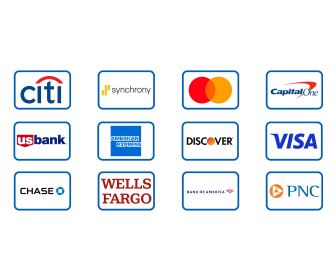The Psychology of Paying with Plastic
Paying with a credit card feels different from paying with cash — and that’s not an accident. Psychologists and behavioral economists have studied how “plastic money” changes the way we think about spending. Credit cards make transactions feel smoother and less painful, but that same convenience can quietly alter our financial habits. Here’s what happens in your brain when you swipe — and how to stay in control.
1. The Pain of Paying — and How Cards Dull It
When you pay with cash, you physically feel the loss of money leaving your hand — what researchers call the “pain of paying.” With credit cards, that pain is delayed and softened. You get the satisfaction of buying now, but the financial reality doesn’t arrive until weeks later.
- Cash = tangible loss: You immediately see and feel the reduction in your wallet.
- Credit = abstract spending: The swipe disconnects emotion from expense.
- Result: People tend to spend more with cards than they would with cash.
2. The Illusion of “Future Me” Will Handle It
Credit cards trigger optimism bias — the belief that your future self will manage payments better than your present self does. This psychological trick makes it easier to justify impulsive purchases, especially when the bill feels far away.
- Short-term comfort: Buying now feels rewarding.
- Future cost: The pain is postponed, so you underestimate it.
- Solution: Check your balance right after big purchases to make it feel real again.
3. Points and Rewards as Emotional Justification
Rewards programs can create a mental loophole: the belief that every purchase is a smart one because it earns points or cash back. While rewards can be valuable, they also activate the brain’s reward centers — the same ones triggered by small wins or gambling.
- Reward bias: Earning points feels like saving money — even when you’re spending more.
- Justification loop: “It’s okay, I’ll get 2% back” can lead to overspending.
- Stay mindful: Track total spending, not just rewards earned.
4. The Power of Abstraction and Delayed Consequences
Credit cards remove the physical connection between spending and payment. This abstraction makes it easier to buy impulsively because the emotional “cost” of spending feels distant. It’s the same reason mobile wallets and one-click checkouts encourage more frequent purchases.
- Instant gratification: You get the product immediately, payment comes later.
- Weakened feedback: You don’t feel the “loss” in real time.
- Reconnection trick: Check your account manually after each major purchase to restore awareness.
5. Social and Emotional Influences
Cards often make spending more socially acceptable or emotionally easier. People are less embarrassed using a card for luxury items than paying cash, and cards can make generosity — like picking up a restaurant tab — feel effortless. That social smoothness can come at a hidden cost if you don’t monitor your budget.
- Status illusion: Premium cards or metal designs can boost perceived confidence.
- Generosity bias: People tend to tip more and buy more when paying with cards.
- Budget control: Emotional purchases feel smaller when the pain of payment is delayed.
6. Using Psychology to Your Advantage
Understanding these biases doesn’t mean avoiding credit cards — it means designing systems that counteract them. Treat your card like a budgeting tool, not free money. Use automation, visibility, and accountability to close the psychological gap between spending and paying.
- Pay immediately: After every purchase or weekly, not just once per month.
- Use alerts: Set spending notifications to increase awareness.
- Review statements: Reflect on which charges felt “worth it” emotionally — and which didn’t.
Expert insight: Credit cards don’t make people irresponsible — they just make spending feel different. When you understand the psychology behind that feeling, you regain control. Awareness is the ultimate financial advantage.
Final Thoughts
Paying with plastic changes more than just how you buy — it changes how you feel about money. The trick is using that psychology to your benefit: automate payments, track spending, and stay emotionally connected to your purchases. When your brain and your budget work together, credit becomes a tool — not a trap.
Not financial advice. Behavioral insights are general and may not apply equally to everyone. Always review your spending and credit card terms before making financial decisions.



